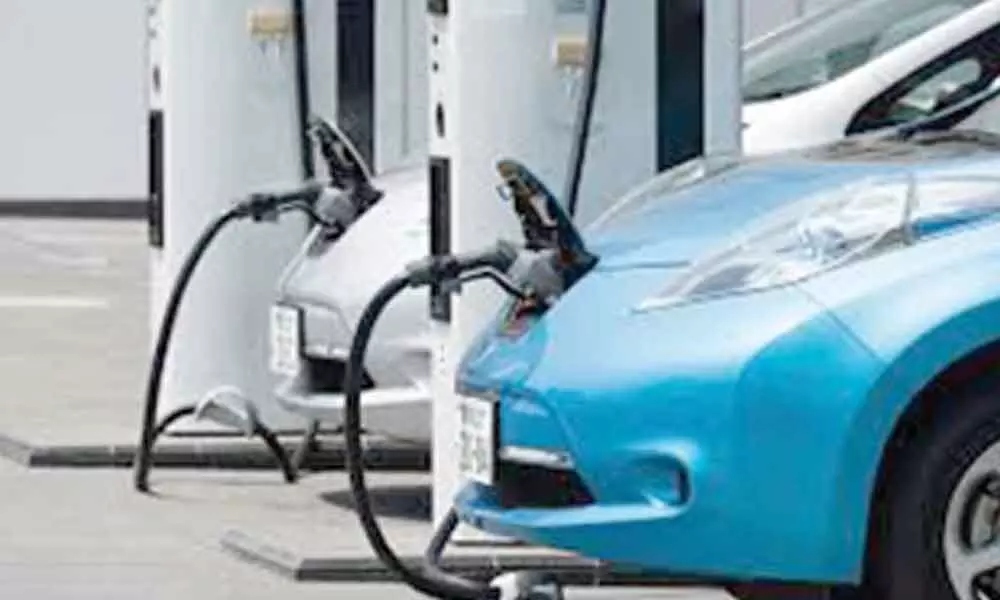The path ahead for electric vehicles

The path ahead for electric vehicles
Norway has decided that all vehicles on the roads will be electric-powered from 2025. Denmark and Netherland have proposed to implement this policy from 2030 and England and California, a state of the United States, from 2035.
Norway has decided that all vehicles on the roads will be electric-powered from 2025. Denmark and Netherland have proposed to implement this policy from 2030 and England and California, a state of the United States, from 2035.
The world is marching to adopt electric vehicles. The main reason is that the point of pollution shifts from the city to the interior. The production of electricity from thermal, solar or hydro plants takes place in distant areas while the use of that electricity takes place in the city. The interior is more polluted but the city is cleaner. This is good.
The population of most countries is increasingly concentrated in the cities. Large numbers in the cities stand benefit while smaller numbers in the periphery stand to lose. For example, the population of Delhi is 3.1 crore. The supply of electricity to this population could be made by establishing thermal plants that may affect, say, an area of 1,000 square kilometres. Given the average population density of India is 460 persons per square km, only 4.6 lakh persons will be adversely affected in the generation of electricity while 3.1 crore persons in Delhi will be benefited in the consumption of electricity by shifting from petrol vehicles to electric vehicles. The 4.6 lakh persons that are adversely affected could be easily compensated out of the health and other benefits reaped by the people of the cities. The overall pollution will also reduce.
The petrol cars often use only 20-30 per cent of the energy. The rest is blown out of the tail pipe. In comparison, large thermal plants can attain an efficiency of 60 to 80 per cent. Thus, we will reduce the pollution if we travel the distance in an electric vehicle. Electric vehicles were much expensive till recently. However, their price is declining rapidly. A study by the World Economic Forum says that the price of a particular petrol vehicle increased from $ 24k in 2019 to 25k in 2021 and is expected to increase to 26k in 2025. In contrast, the price of a comparable electric vehicle declined from $50k in 2019 to 39k in 2021 and is expected to decline to 18k in 2025. Thus, very soon, electric cars are expected to become cheaper than petrol cars.
No wonder, then, that China has sold 500k electric vehicles in the first quarter January-March of this year and Europe has sold 450k. India unfortunately lags far behind having sold only about 70k units in the same period.
The Central government as well as many State governments have implemented subsidy schemes to promote electric vehicles. The Central government, for example, gives a subsidy of Rs 15,000 per kWh on electric vehicles. The policy is in the right direction. However, there is a still better way to do this. We may impose a higher 'carbon tax' on petrol vehicles instead. It was found in Australia that 51 of 62 economist surveys were in favour of providing subsidies to electric vehicles. However, six were in favour of imposing a carbon tax instead. Their views need attention even though they are in a minority.
There are two ways of promoting electric vehicles. One way is to provide subsidy on electric vehicles and make them cheaper. The other way is to impose a carbon tax on petrol vehicles and make them more expensive. The result will be the same. Electric vehicles will become cheaper than petrol vehicles in both cases. Difference is that imposition of carbon tax on petrol vehicles will beget revenue; while providing subsidy on electric vehicles will impose financial burden upon the government. The question then is this: Why should a work be done by incurring financial burden when the same work can be done by collecting revenue? The case against this proposal is that the cost of petrol vehicles will become high and the consumer will be adversely affected. This argument does not hold. There is no such thing as a "free lunch" in economics. The expenditure incurred in giving subsidy is collected by the government from the people by imposing tax elsewhere. Those taxpayers will be adversely affected. Thus, the question is whether to impose a cost on the user of petrol vehicle by imposing carbon tax on his vehicles or to impose the same cost on the consumer by collecting taxes elsewhere. The consumer has to bear the burden in both the situations. The difference is that the burden is imposed on the users of petrol vehicles in carbon tax while the same burden is imposed on all the people generally in giving subsidies.
I would vote for imposing carbon tax so that only those consumers are affected that contribute to pollution. Why should the hapless citizen of the country who uses no vehicles bear the burden of cleaning up the pollution make by the users of petrol vehicles?
Another change in policy that must be done is the introduction of "time of the day" pricing of electricity. The price of electricity varies at different times of the day according to demand in large number of countries. The price may be Rs 2 per unit in midnight against Rs 8 per unit in daytime when the demand is high. Another country may have a price of Rs 8 per unit in midnight against Rs 2 per unit in daytime when solar power is available. Such time of the day pricing encourages the consumer to charge their electric vehicles during low tariff time, reduce their cost and thus encourage their use. This policy will also lower the overall tariff of electricity in the country.
At present the thermal plants in the country are often are asked to "backdown" their production during the night because of less demand. This backdown leads to inefficiency because the plant has to operate at lower capacity. Time of the day pricing would lead consumers to charge their electric vehicles when the price is less and not requiring the plants to backdown.
Lastly, we must not lose sight of the fact that the capacity of the earth to produce electricity – even clean solar electricity – is inherently limited. Therefore, the government must simultaneously improve the public transport system– especially buses – so that the need for private cars is less and burden on the earth is less. The government has done well to make metros in major cities. This should be followed by an improvement in the bus system powered by electricity.
(The author is former Professor of Economics at IIM, Bengaluru)
(The opinions expressed in this column are those of the writer. The facts and opinions expressed here do not reflect the views of The Hans India)










